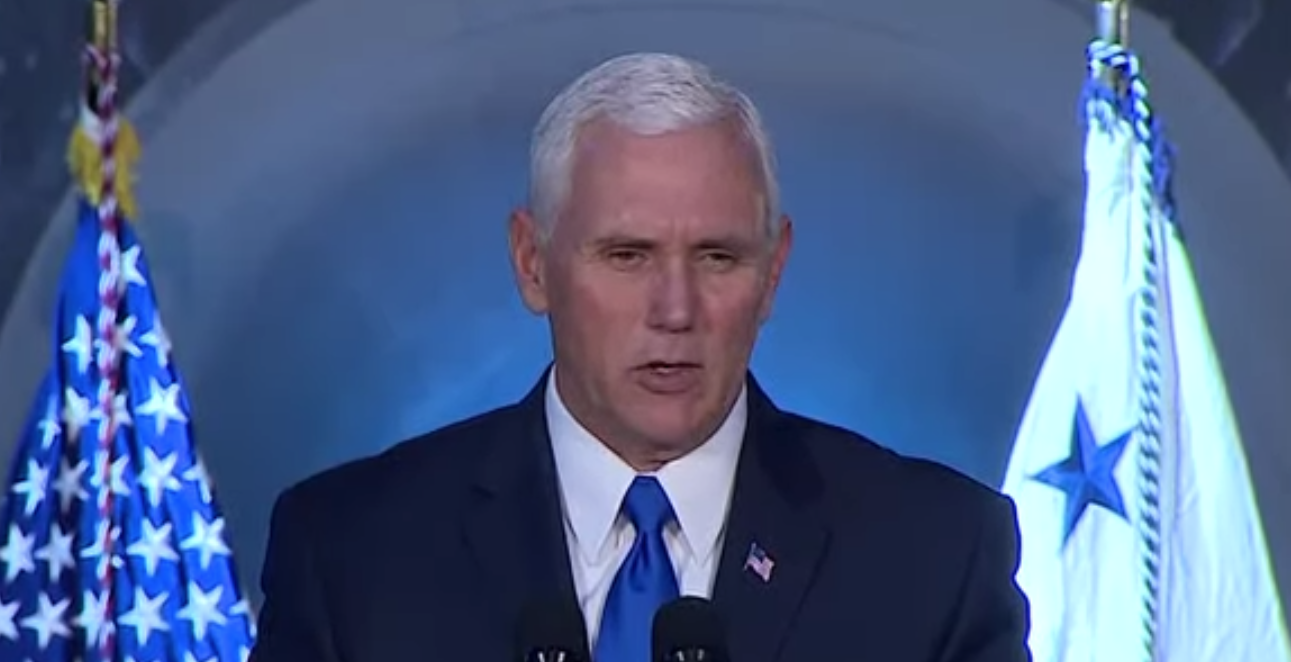
Vice President Mike Pence address the National Security Space Council on Oct. 5, 2017. Screenshot photo.
In the first meeting since the re-establishment of the National Space Council, Vice President Mike Pence promised “America will lead in space once again.”
Pence led a discussion of urgent needs across the civil, commercial, and national security space sectors, and assured government and business leaders President Donald Trump is “committed to American leadership on Earth and in the boundless expanse of space.” National security space experts told Pence the US needs greater real-time space situational awareness (SSA) and increased anti-satellite capabilities to deter adversaries from initiating combat operations in space.
“America entered this new millennium without a coherent policy, a coherent vision for outer space,” Pence said. “And in the absence of American leadership, other nations have seized the opportunity to stake their claim in the infinite frontier.”
Pence promised the Trump administration would work to “return American astronauts to the moon” in order to “build the foundation we need to send Americans to Mars and beyond,” and said the US needs to build up its own capacities in space travel so US astronauts will no longer need to ride on Russian rockets to the International Space Station at a cost of roughly $75 million per seat.
In February, NASA announced it had agreed to send at least two US astronauts on missions to the ISS aboard Russian Soyuz spacecraft in 2017 and 2018. The $373.5 million agreement contains an option for three more seats on the Soyuz, which would bring the cost of each seat to about $75 million.
He also acknowledged “space is vital to our national security,” but cautioned, “Our adversaries are aggressively developing jamming, hacking, and other technologies intended to cripple military surveillance, navigation, and communication systems.”
Members of the panel of experts reporting to the council elaborated further on the urgent national security space challenges.
The panel agreed the US needs to improve its SSA, which currently relies on a relatively low number of “exquisite” satellites, meaning “hours and even days go by without updates to orbital locations,” said Pamela Melroy, formerly with DARPA’s Tactical Technology Office. “The possibility of missing a dynamic threat to our spacecraft is unacceptable,” she said.
“What is needed is less exquisite, but more timely, comprehensive, and persistent domain awareness,” confirmed Michael Griffin, former NASA administrator.
“We have to have more sensors to get more frequent updates,” Melroy said, “but these sensors don’t have to be as precise and expensive as our current sensors” because a higher frequency of imaging can make up for the lower levels of precision. DOD could achieve this goal cheaply through new public-private partnerships, Melroy said. “The proliferation of commercial space sensors is a potential fit for this need.”
But a better view of space operations is not enough, Griffin said. “We must develop our own capabilities to project power in space” at the same time. “We must be able to hold adversaries’ space capabilities at risk even as they seek to do so to ours.”
To develop such capabilities does not mean the US would have to use them. The hope would be to increase space’s deterrence role in US strategy. On this approach, Griffin said, the most important goal for national security space is the US “be, and appear to be, so strong that no one takes us on.”